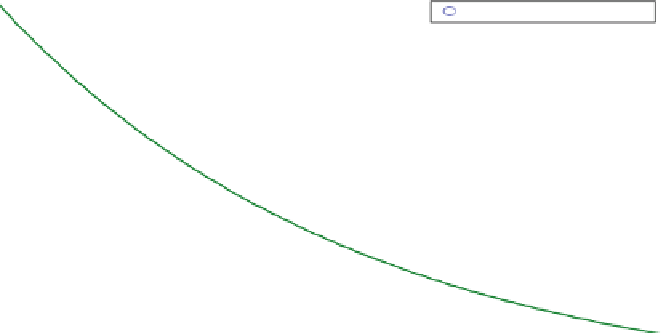Environmental Engineering Reference
In-Depth Information
100
activity of Linuron in soil
90
80
70
60
50
40
30
20
time [days]
10
0
10
20
30
40
50
60
70
80
Fig. 5.1
Exponential decay; computed from analytical solution using MATLAB
®
; circles show
measured data, line represents optimized model, as described below
where the integer
n
is the
order of degradation or decay
.
is the so called decay or
degradation constant, which generally depends on all variables in the environment
of the system in question. Second order decay is proportional to the square of the
concentration. Note that the physical unit of
l
l
depends on the exponent
n
. For the
important case with
n ¼
is [1/T].
The sink term, given by (
5.1
), is substituted in the general mass transport
equations as (3.19) and (3.20). Note that both,
q
and the differential equation
have the same physical units (M/T/L
3
). Because the porosity
1, the unit of
l
y
appears in all
terms, it can be omitted. One obtains:
@c
@t
¼r
D
rc r
vc
l
c
n
(5.2)
With this approach, decay and degradation processes are included in the trans-
port equation, and it becomes possible to treat transport, decay and degradation
simultaneously. Before we give solutions and solution strategies for the general
situation, special cases will be treated first.
If no other processes are relevant remains:
@c
@t
¼
l
c
n
(5.3)
This is an ordinary differential equation for the independent variable
t
. Most
important is first order decay or degradation, i.e. the case
n ¼
1, where losses are
proportional to the concentration. Then the solution of the differential (
5.3
) can be
noted directly:






















































































